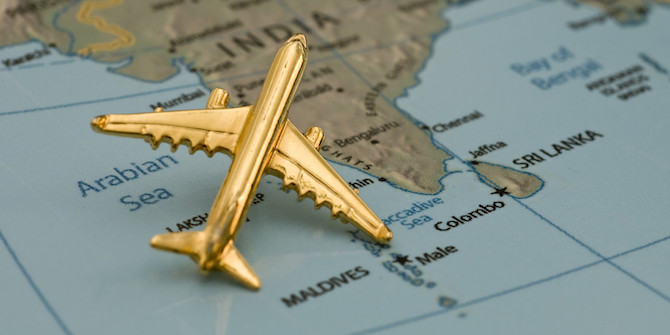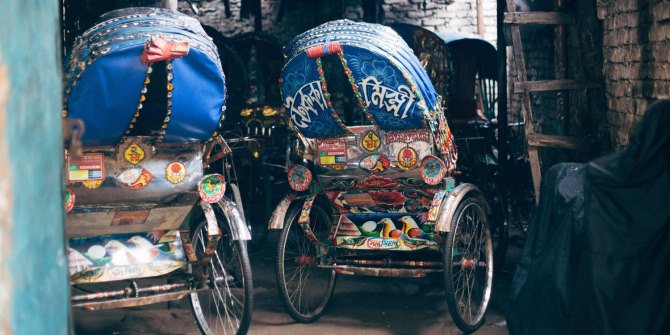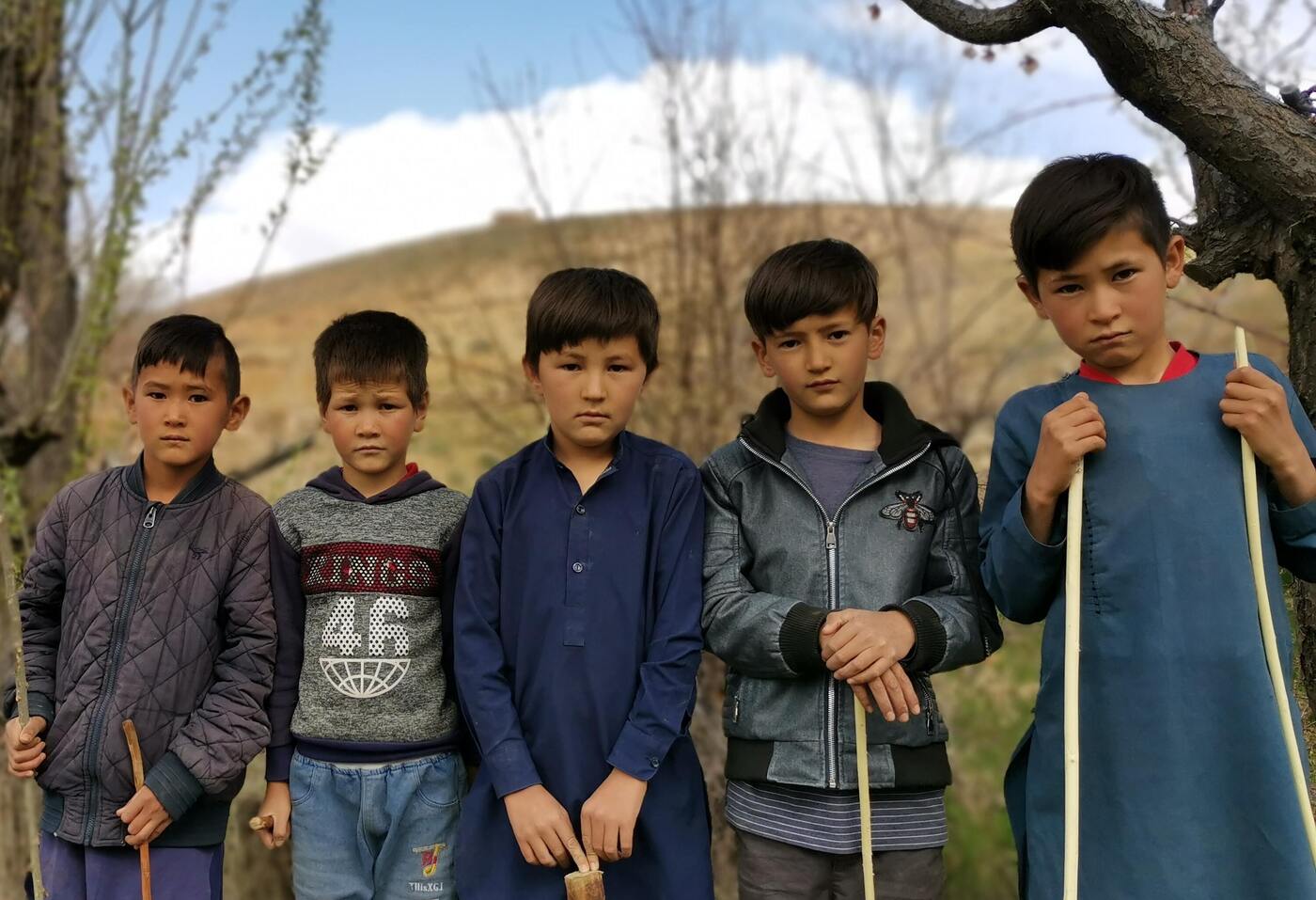Sudeep Basu analyses diasporic giving in northern Gujarat and asks whether remittances can be institutionalised to promote developmental and democratic goals.
To date, much of the literature on migration has focused on the migrant–host relationship, stemming in part from the predominance of the ‘statist’ paradigm in the study of ‘migration orders’. This line of thinking has tended to neglect migrants’ ties to their homeland nurtured not only through idea of the ‘myth of return’, but also through concrete links with the homeland through collective remittances. During my field work in a village in northern Gujarat, I explored how migrants – members of the Patidar community (as well as a few who happen to be Brahmins) who have settled in New York, New Jersey and Atlanta since the 1960s – retain links via remittances and conspicuous investments in houses, temples and other developmental works.
Diasporic giving in Gujarat highlights the paradoxes of India’s ‘culture of giving’, in which religious and secular practices of giving coexist and are in a state of ‘creative tension’. My research therefore asks what values, motivations and conditions make possible the movement from the religious sphere of dan – that is, disembodied giving in which donation is done selflessly and anonymously – to the institutionalisation of such forms of giving in other spheres for productive ends?
Diasporic philanthropic activities in India encompass a wide range of activities, with an avowed religious or secular intent. Remittance literature to date has been inconclusive on whether altruistic or self-interested motives have dominated. In my field site, donations to temples or other religious establishments were predominant.
But donations towards secular projects were also made. In 2011, members of the diaspora, primarily the US-based Salahkar committee (comprising Patidars), donated about 40 lakh rupees towards the renovation of the local secondary school and the construction of a boundary wall. The Salahkar committee remained in touch with the school trust via the internet and phone. About 90 per cent of the children enrolled at the school are not Patidars, who prefer to send their children to English-medium schools or better Gujarati-medium institutions in nearby Kadi and Kalol.
Members of the diaspora have also sent donations to the P.H. Bhagwati Sarvajanik Hospital, established in the village about 25 years ago, with which an ambulance was purchased. The hospital’s poor staffing and management has been the subject of frequent complaints by the village residents. It primarily caters to the needs of the non-Patidar community, with the Patidars choosing hospitals in nearby towns instead.
Donations from the diaspora have also provided a drinking water facility for residents and visitors to the village; a pankhighar situated at one corner of the village square near the panchayat office, built at a cost of five lakh rupees; and a community hall – complete with garden and volleyball court – whose use is restricted to the members of the Patidar community.
Next to these donations are plaques of different sizes engraved with the names of the non-resident Patidar donors. But my private conversations with members of both the Patidar and non-Patidar communities indicated that donors who seek public acknowledgement of their philanthropy are not held in public esteem. As one non-migrant Patidar derisively remarked, migrants are especially attracted to seeing their names on plaques. Instead, the village community reserves its regard for migrants who are able to give dan. Though such selfless modes of giving are infrequent and irregular, they set the standard for evaluating the worth of a gift and the worthiness of the giver.
Notably, the conspicuous philanthropy of migrant Patidars, return migrants, and locals related to them by kinship or community is denigrated and loathed by ‘non-migrant others’ in the village. For example, non-Patidar locals perceive diasporic donations as crass investments towards the migrant’s own social status. Indeed, the status-enhancing motives that donors have in relation to contributions towards development activities frequently have deleterious results, evidenced through what Charles Tilly (1998) calls ‘opportunity hoarding’ and feelings of envy, loathing and deprivation among non-migrant, non-Patidars in the village.
At the national level in India, a narrative is emerging about the need to tap the potential of the Indian diaspora by framing policies to encourage contributions to the homeland. Still, the donor’s distrust of formal institutions in India continues to be underscored by the fact that many individuals choose to use family and close friends from their own community and caste as conduits for charitable gifts and social investments, believing that they are the most trustworthy of intermediaries and best able to identify local needs. Since these strategic forms of giving tend to address personal or local issues, larger concerns of equitable development or social justice in a village setting fall by the wayside.
Such giving is, after all, subject to the fact that the diaspora has deep and powerful provincial local affinities at the village level that can be at once religious, filial and developmental. These affinities are often at variance with state-centric expectations and the idea of a secular, globalising economy. Herein lies the paradox of India’s ‘culture of giving’.
The question local trusts and organisations as well as the diaspora have to ask is not only ‘who do we represent?’, but more importantly ‘what do we represent?’. Do members of the Indian diaspora represent a village, a community or ‘kutumb’, forces of development, a region, a country, or an ethos?
Clearly, few individuals have the capacity and will to give repeatedly and freely without any kind of external reward. Competing claims by groups who seek a share of the diasporic donations in both material and non-material terms also generates resentment against givers. Generalisations of social approval and esteem such that the practice of giving brings overt approval from others – recipients and non-recipients alike – and internalised reactions of good conscience and enhanced self-image are a way to ensure democratic inclusion, credibility and accountability within and between groups in rural social life touched by modernity. But as my findings in this north Gujarat village suggest, the non-membership of non-migrant, non-Patidar communities in village associations and trusts continues to be a major obstacle towards realising this end.
Dr Sudeep Basu is the 2012-13 CR Parekh Fellow at the LSE Asia Research Centre. He is Assistant Professor at the Gujarat Institute of Development Research, Ahmedabad, India.








